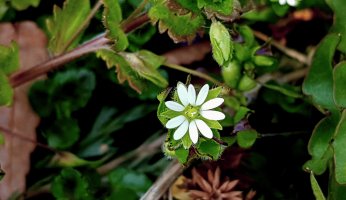Wild Food Profile – Sweet Gum Tree
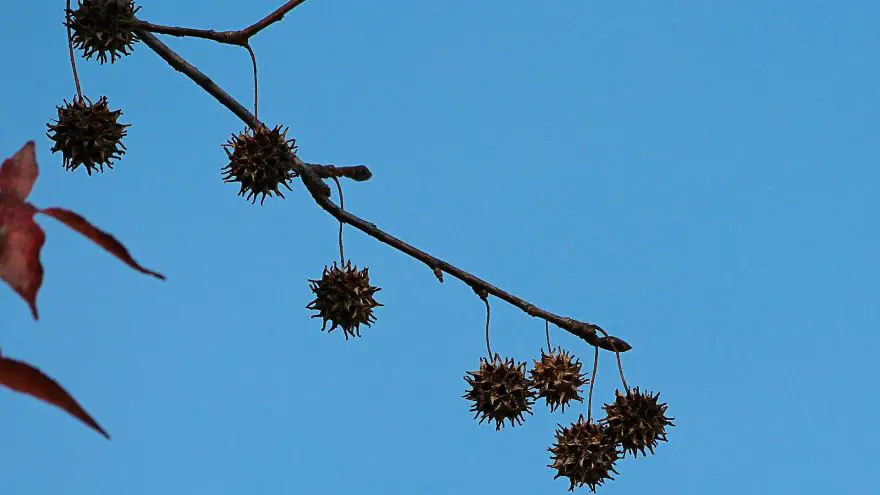 Wild Food Profile – Sweet Gum Tree
gearweare.net
Wild Food Profile – Sweet Gum Tree
gearweare.net
Beautiful garden tree, caretaker’s scourge, and herbalist’s prize, however you want to look at it the sweet gum tree is a remarkable plant found from New England to Florida and west to Texas. It is loved for the medicinal properties of its sap, leaves, and seeds, and hated for the hazards made from its hard spiky seedpods by gardeners and foragers alike who inevitably step on them or run them over with lawnmowers. However you feel towards the sweet gum I hope this article can bring a bit more appreciation towards its beneficial qualities and make you take a second look next time you’re out in the forest.

Table of Contents
Botanical Profile
Sweet gum or Liquidambar styraciflua is a medium-sized tree growing up to 155 feet in height in a stunning pyramid shape that rounds out as the trees mature. They can live up to 400 years and attain a trunk that measures six feet in diameter. The dark green leaves are easily recognizable. They are palmate with five pointed lobes turning a brilliant red in the fall. The seedpods that grow throughout the summer are yellow and wingless and turn black and grow little wings as they mature. These are the well-known seedpods that cause so much attention. They are usually around the size of a quarter.
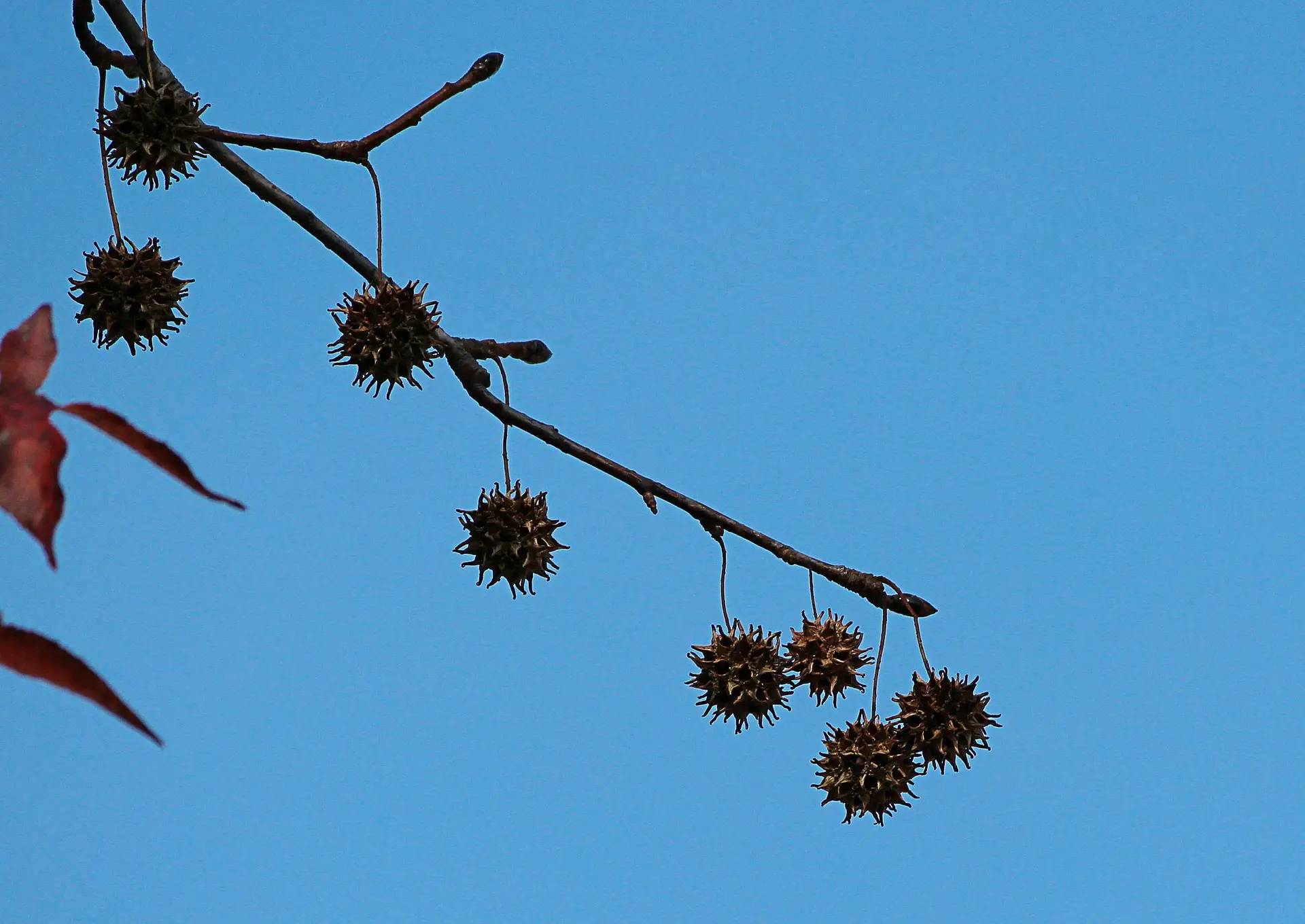
Distribution
Sweet gum trees can be found all over the eastern portion of the United States. It is found growing in deep moisture retaining soils out in the open. It favors the same growing conditions as pine trees and often colonizes areas where commercial timber is planted. This competition leads to problems with commercial loggers that remove the sweet gums in the process of harvesting the more commercially desirable soft woods. Sweet gums, due to their shape and fall colors are often used as ornamental trees in parks and gardens. Because of this their true range is larger than that of their natural range but wild foods are wild so we will discuss them in the context of their natural range.
Common Uses – Past & Present
Within the confines of spring the modern as well as traditional use for the sweet gum tree is the sticky sap. Known as storax it has been harvested for centuries to be used as a flavoring agent to tobacco and a source of incense as well. Medicinal uses date back to the time of the Aztec empire where they collected it for treating skin infections. Many Native American cultures collect the sap for the treatment of coughs, dysentery, and wounds. Sweet gum sap has even been boiled with milk and ingested to relieve symptoms of diarrhea.
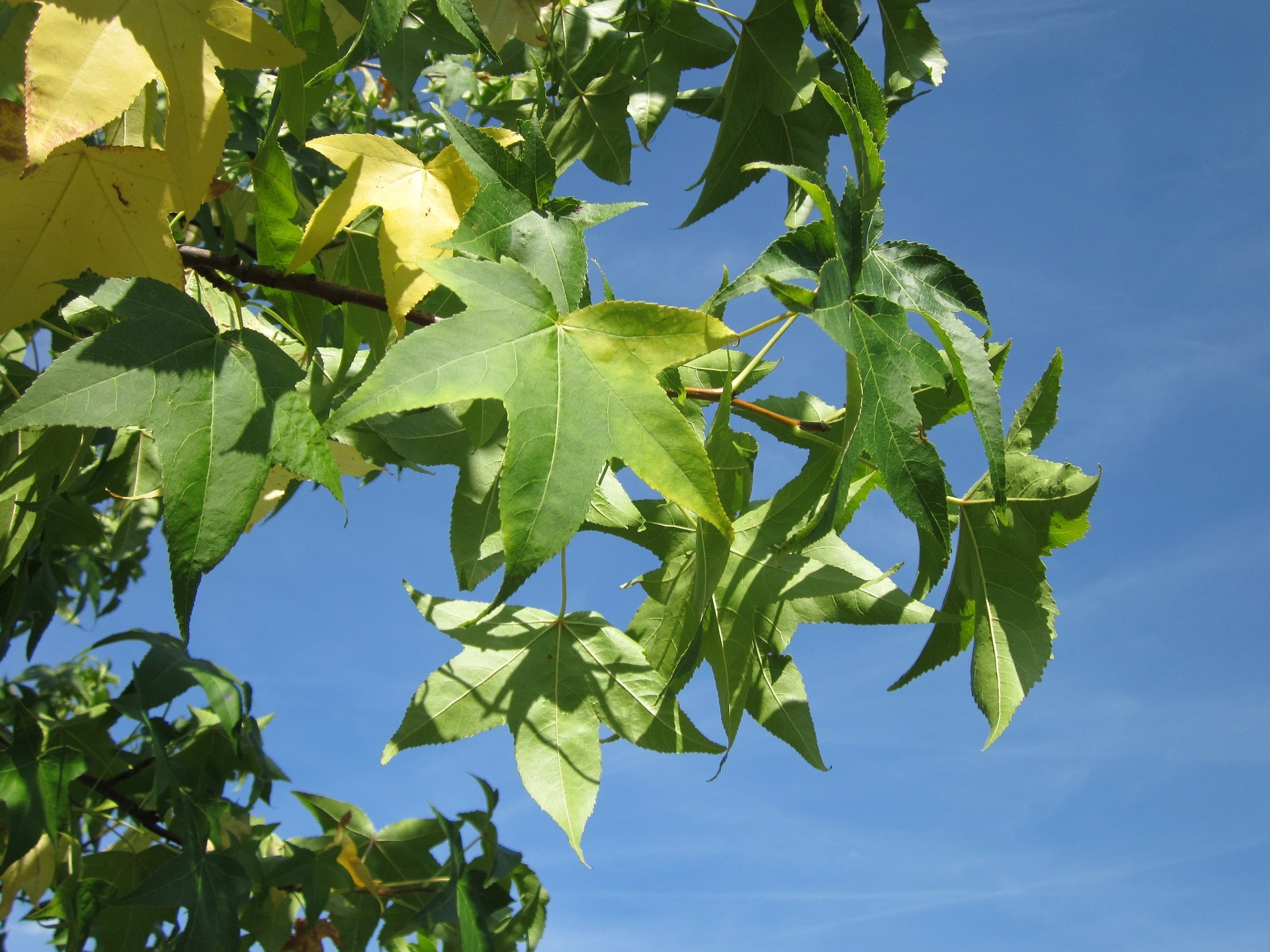
Seasonality
Harvesting the sap of sweet gum is season specific. Like any tree species the sap migrates to the base of the tree in the fall where it is stored during the coldest months. Then as the season changes and the air begins to warm the sap travels back up into the whole tree. It is during this time that the sap is easiest to harvest. The movement up the trunk gives access to the sap along the inner bark when harvesting takes place. Depending on where you are throughout the sweet gum’s range the exact time of year will vary quite dramatically. Just remember it is when the weather begins to warm after winter.
How to Harvest
If you are interested in giving it a go and harvesting your own sweet gum sap there are a few steps to get you on your way. The sap flows within the inner bark so to access it you must cut away a small piece of the outer bark. Pay attention to the size of the piece you take away. Only cut a few inches in total. Leave this portion of the inner bark exposed for a few days and in the meantime it will ooze with sap. This is the natural defense mechanism for the tree to heal the wound left after the bark is removed. You are looking for sap that is firm. If it is the right consistency use a knife to pry off the pieces of sap and collect them in a small bowl. If you are using the bark as a chewing gum then you can use it straight away. If you are using it for other purposes then you may need to process it further.
Sustainability
Any discussion of harvesting wild plants has to include a consideration of the sustainability of harvesting such materials. Wild plants can grow anywhere and everywhere, but can also grow very sporadically and with unchecked harvesting can be eradicated from a particular area. Harvesting a tree like sweet gum it is easier to maintain sustainable practices. The trees are easily spotted so you can be sure not to harvest from the only specimen in the area and the method for harvesting is such that if the methods from above are followed then there should be no risk to the trees health. Looking at harvesting sap specifically, the keys to remaining sustainable are to only harvest a small amount from each tree. The sap is the food for the tree in the end so harvesting all of it would starve the tree and either stunt its growth or kill it outright.
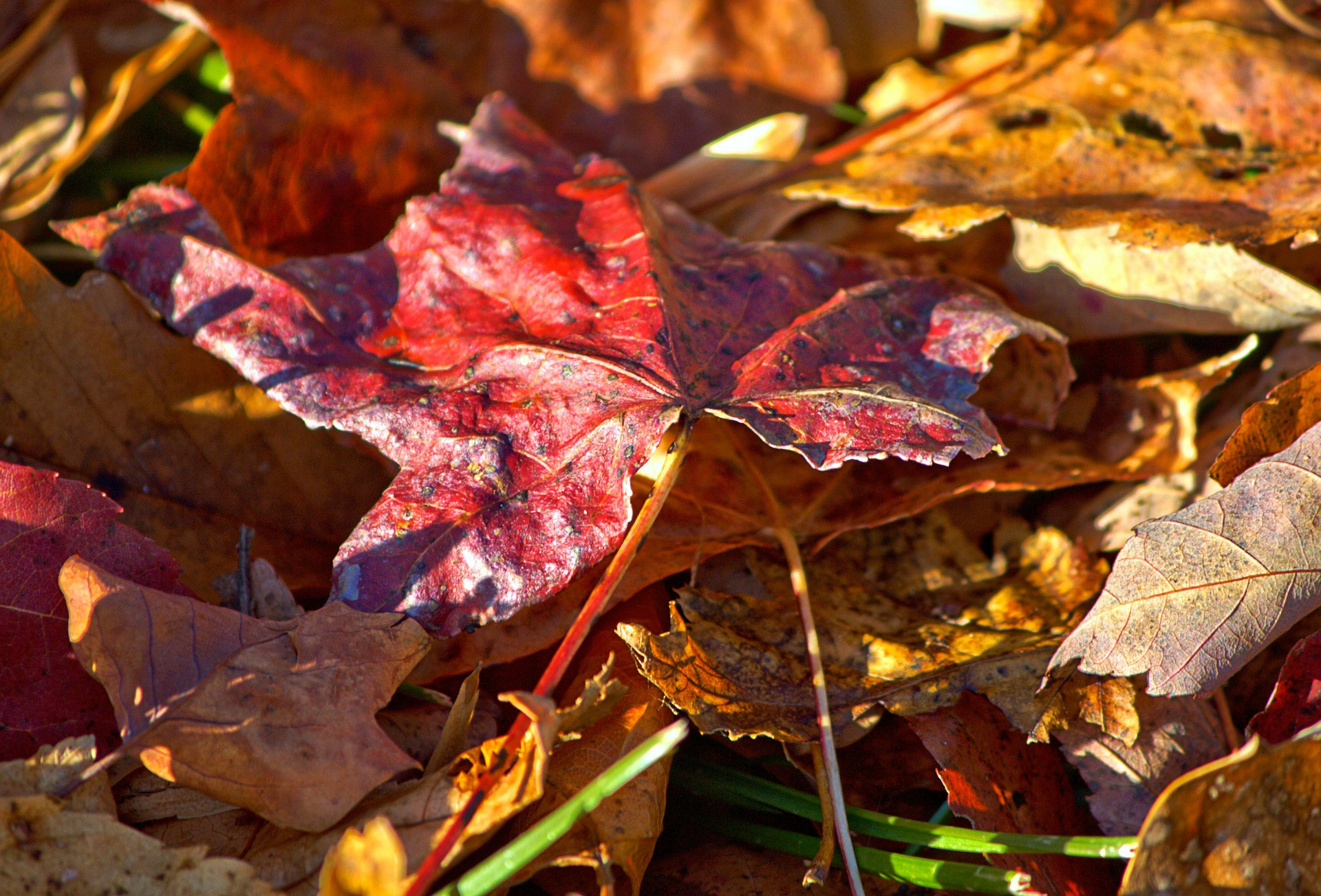
Conclusion
Tall sprawling branches and crimson autumnal leaves make the sweet gum tree a beautiful sight to see out in the forest. Skip the corner store and find this eastern tree to take advantage of the natural source of chewing gum. Tap into centuries old traditions and learn more about how to prepare some of the many medicinal preparations sweet gum sap has to offer. Whether you’re a seasoned forager or just starting out the sweet gum tree is the perfect plant to have in your arsenal of native plants for natural remedies and unique food items. While in the forest check out for paper birch tree which is known for papery white bark and its ornamental leaves.
– Disclaimer –
This post is strictly intended for informational purposes. Please research further if you have allergies, or think you may have a reaction to certain vegetables, flowers, roots, and other wild plants which may be suitable for consumption before eating them. It is important to identify plants properly before eating.
*** GearWeAre is not responsible for any allergic reactions or mistaken identification of wildly grown edibles. ***






